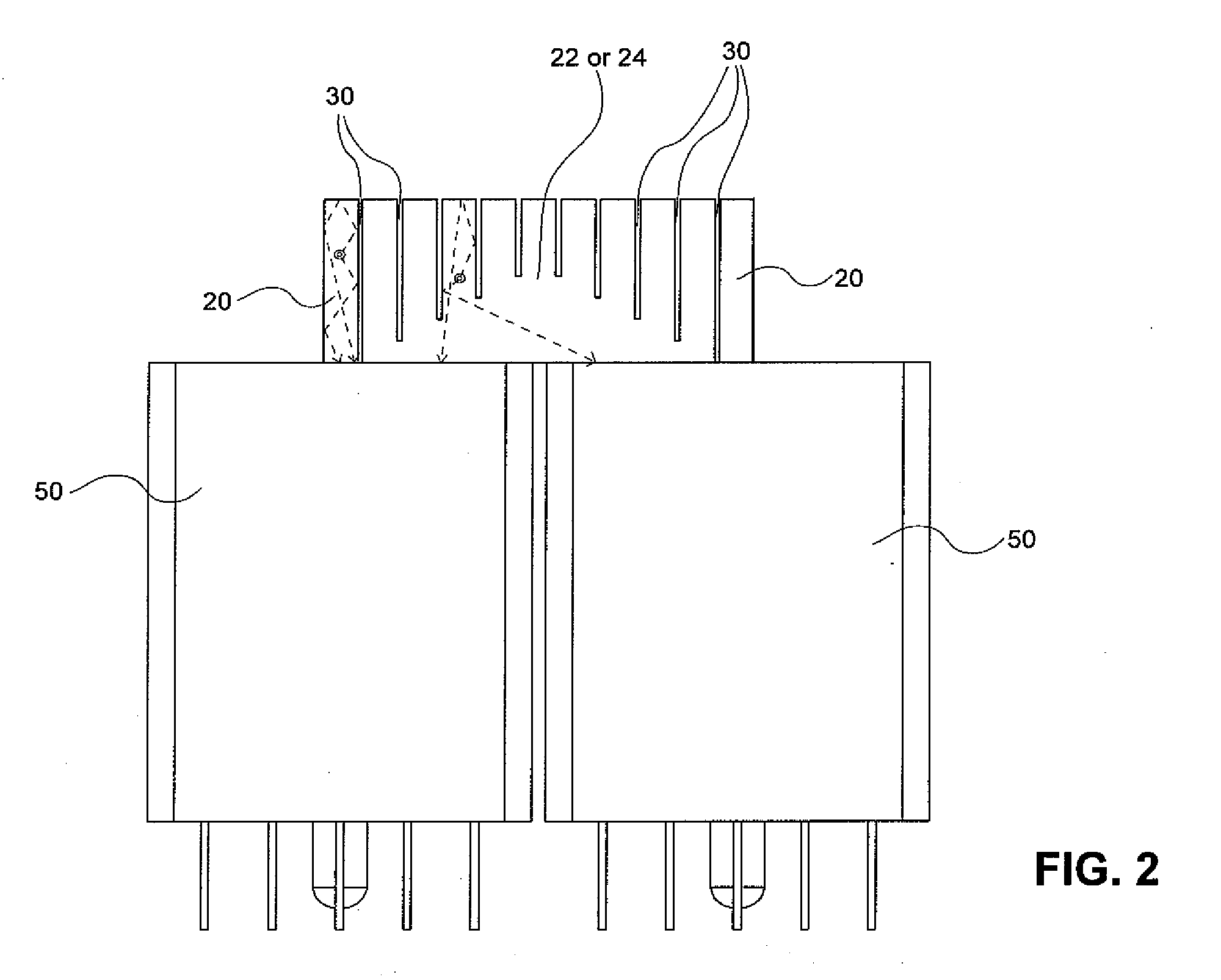Novel scintillation detector array and associate signal processing method for gamma ray detection with encoding the energy, position, and time coordinaties of the interaction
a detector array and gamma ray detection technology, applied in the field of new scintillation detector array and associate signal processing method for gamma ray detection, can solve the problems of reducing system efficiency, patent does not teach whether and how to use light guides, and image resolution degradation
- Summary
- Abstract
- Description
- Claims
- Application Information
AI Technical Summary
Benefits of technology
Problems solved by technology
Method used
Image
Examples
Embodiment Construction
[0035]Embodiments of the invention relate to detectors and apparatus that can determine the energy, position and time coordinates of light emission generated by interactions between gamma rays and scintillators comprising one or more scintillating materials. Some embodiments of the invention relate to gamma detector arrays that comprise scintillator detectors (for interaction with gamma rays) coupled to photodetectors (for detection of photons generated from gamma ray interactions with the scintillator detectors). Some scintillator detectors may be optically coupled to photodetectors using a light guide, which may be segmented or non-segmented. In addition, the light guide may be active (with scintillating capability) or non-active (without scintillating capability). “Segmented” or “non-segmented” refers to whether the light guide has barriers defining a number of slots. Such segmented slots may have barriers at different depth to allow for control of statistical distributions of ph...
PUM
 Login to View More
Login to View More Abstract
Description
Claims
Application Information
 Login to View More
Login to View More - R&D
- Intellectual Property
- Life Sciences
- Materials
- Tech Scout
- Unparalleled Data Quality
- Higher Quality Content
- 60% Fewer Hallucinations
Browse by: Latest US Patents, China's latest patents, Technical Efficacy Thesaurus, Application Domain, Technology Topic, Popular Technical Reports.
© 2025 PatSnap. All rights reserved.Legal|Privacy policy|Modern Slavery Act Transparency Statement|Sitemap|About US| Contact US: help@patsnap.com



